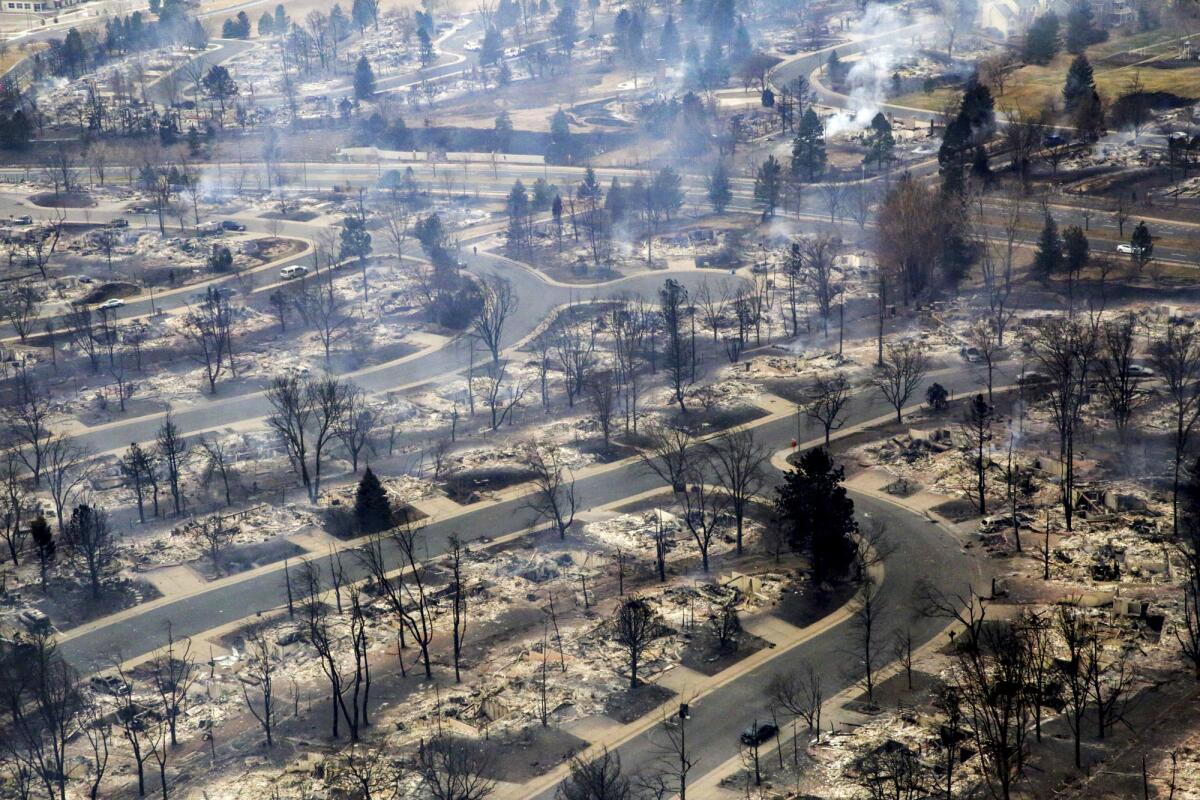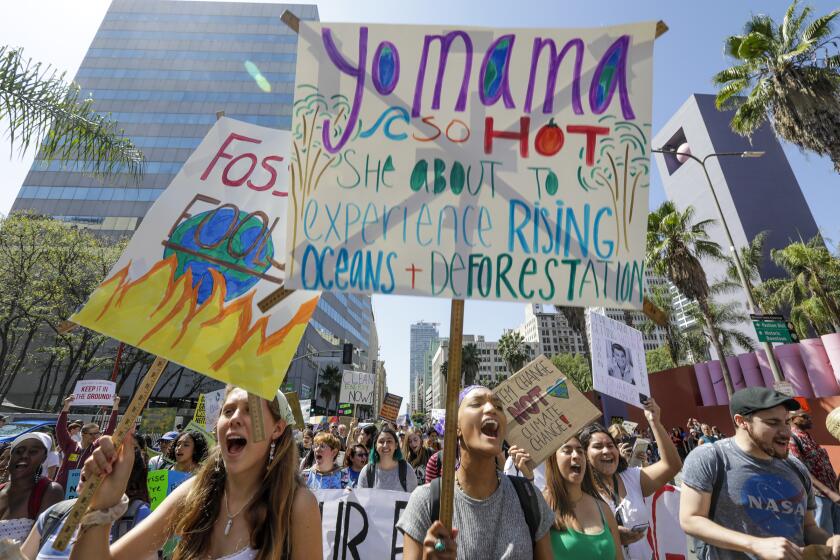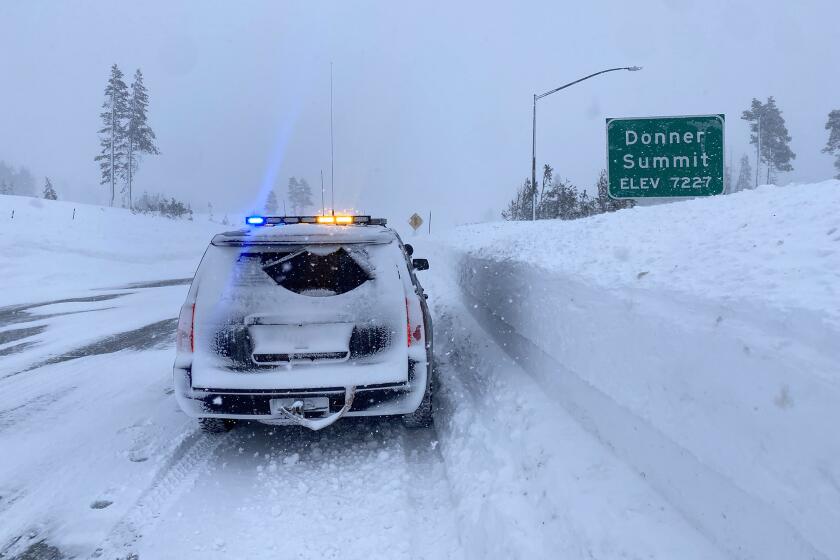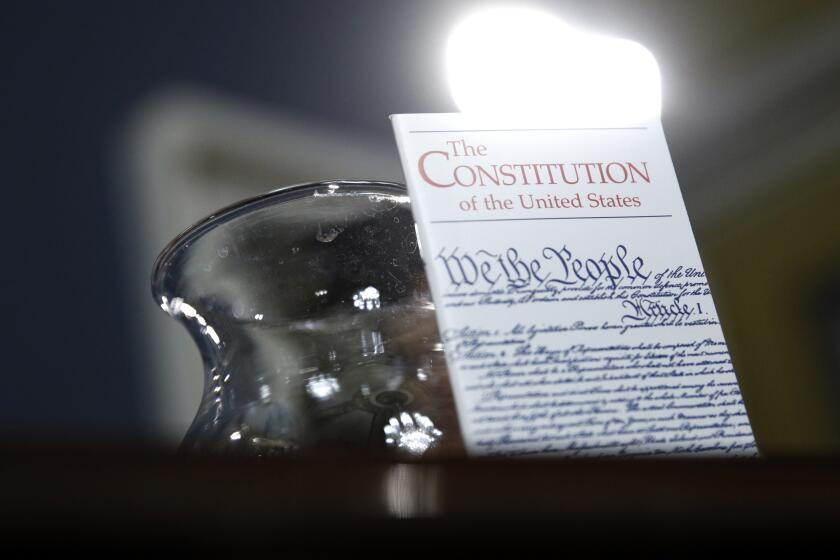Editorial: Colorado winter wildfire shatters the illusion of safety in Western suburbs

- Share via
The winter wildfire that ripped through grasslands near Boulder, Colo., and engulfed suburban neighborhoods with ferocious speed last week was unexpected and frightening.
Hurricane-force winds gusted at over 100 mph, whipping the Marshall fire into a building-to-building conflagration that spread across entire subdivisions, big-box stores and a major highway, and destroyed nearly 1,000 homes in a matter of hours. It struck at the end of December, when snowfall should have made wildfire risk virtually nonexistent, and became the state’s most destructive wildfire on record.
Yet climate change is making once-unthinkable disasters like these increasingly common. This firestorm, in particular, should shatter illusions about safety in communities across the Western U.S. as the warming climate fuels more destructive blazes in fire-prone landscapes where we keep building homes. These hard-to-fathom catastrophes are part of our shared fate as greenhouse gas emissions keep rising and producing more climate extremes. We must respond boldly to limit the devastation.
Let this be the year we harness our collective anger and demand politicians finally do what is necessary to prevent catastrophic climate change.
The direct cause of Thursday’s fire remains under investigation, but there is no question it has the fingerprints of climate change. The Marshall fire was preceded by severe drought and record warming along the Front Range, which had one of its driest and warmest July 1-to-Dec. 29 periods on record. The Boulder area saw only 1 inch of snow during that time, when it gets about 30 inches on average.
The scenes from Colorado — skies glowing orange, tens of thousands people evacuated and entire neighborhoods leveled and smoldering — are all too familiar to Californians, who have suffered time and again when fierce, downslope winds blow through the chaparral. Despite their different climates, Colorado’s suburbs have much in common with California’s, from the Inland Empire and Orange County to Northern California, where millions of people live in relative denial about their risk of losing everything when high winds and a warm, dry landscape conspire.
Colorado, like California and other Western states, has seen wildfires grow bigger and more intense in recent years. All 20 of Colorado’s largest wildfires have occurred in the last 20 years, an increase scientists have linked to climate change.
A series of storms bring a welcome influx of moisture to California during a severe drought. But with climate change, they aren’t as helpful as they may seem.
Louisville, Superior and other Colorado communities charred by Thursday’s fire are part of the suburban sprawl that spreads out along the plains of the Front Range, not in the mountains or forests that are typically considered in danger from fire. They are laced with parks and open space, golf courses, meandering creeks and walking trails, and are enclaves that are thought of as safe. For many, the idea of catastrophic wildfire penetrating so deep into such communities seemed remote, if ever even pondered.
But in reality the zone known as the wildland-urban interface is more expansive than many people understand and is growing rapidly as we build farther into landscapes primed for fire danger. About 1 in 3 housing units in the United States is now located within one of these fire-prone areas that climate change will continue to dry out for decades into the future.
The threat-amplifying effects of global warming underscore the need to work with speed and urgency to prepare and respond, by curtailing development in fire zones and improving emergency communications and response during high winds that determine, more than anything, whether homes burn or not. The situation will, of course, grow significantly worse if we do not move quickly to slow the heating of the planet by ending the burning of fossil fuels. We cannot wait for another unprecedented disaster to act.
More to Read
A cure for the common opinion
Get thought-provoking perspectives with our weekly newsletter.
You may occasionally receive promotional content from the Los Angeles Times.












